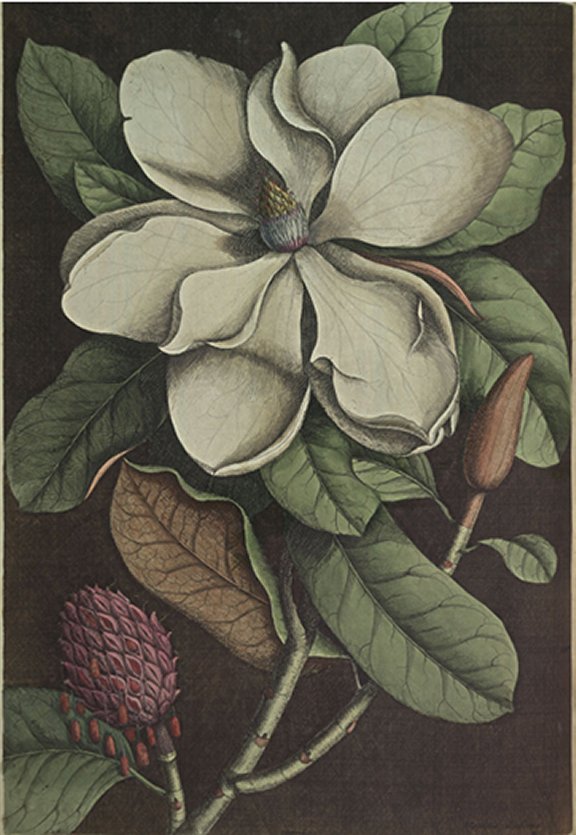Plate Number: II 61Magnolia altissima, flore ingenti candido: The Laurel Tree of Carolina These Trees are commonly two Foot and an half, and sometimes three Feet in Diameter, rising with a strait Trunc, to the Height of eighty Feet and upwards, with a regular shaped Head. The Leaves are shaped like those of the Lauro-cerasus, but much larger, of a shining bright Green, except their under Sides, which are of a Russet red Colour, with a hoary roughness, like Buff. This Particularity in the Leaves doth not appear before the Tree is large, the young ones having their Leaves green on both Sides. In May the Blossoms open, which are large, white and very fragrant, somewhat resembling in Form a single Peony: The Petals are usually ten, and sometimes eleven and twelve in Number; they are thick and succulent, in the midst of which is placed the Ovarium, closely surrounded with Apices, which before the Petals fall off, swells to the Size of a Pigeon's Egg, and when fully grown, is formed into an oval Cone, in Size of a Goose's Egg. It is green at first, but when ripe of a reddish Purple. On the Superficies are many little Protuberances, in each of which lies a single Seed, somewhat less than a Kidney Bean, covered with a red Film: In August, at which Time the Fruit is ripe, every one of these little Swellings openeth, and dischargeth its Seeds, which do not fall immediately to the Ground, but hang pendant by small white Threads, about two Inches long. This stately Tree perfumes the Woods, and displays its Beauties from May till November, producing first its fragrant and ample Blossoms, succeeded by its glittering Fruit. It retains the Leaves all the Year, which being of two Colours have a pretty Effect, when waved by the Wind, displaying first one Side, and then the other. What much adds to the Value of this Tree is, that it is so far naturalized and become a Denizon to our Country and Climate, as to adorn first the Garden of that worthy and curious Baronet, Sir John Colliton, of Exmouth in Devonshire, where for these three Years past, it has produced Plenty of Blossoms, fence that and in the Year 1737, one of them blossom'd at Parsons Green, in the Garden of the Right Honourable Sir Charles Wager; one of which Blossoms expanded, measured eleven Inches over. Their Native Place is Florida and South Carolina, to the North of which I have never seen any, nor heard that they grow. |